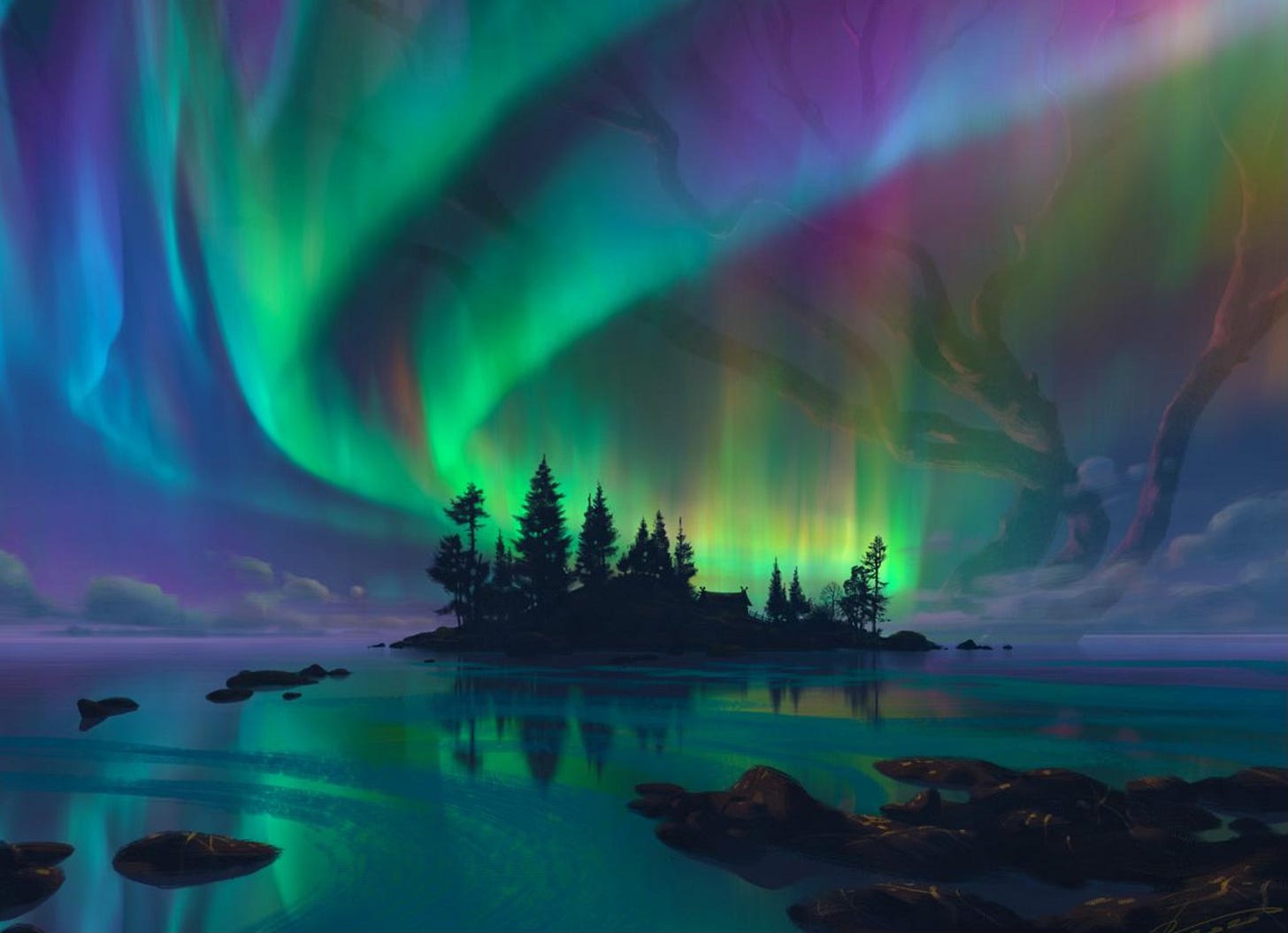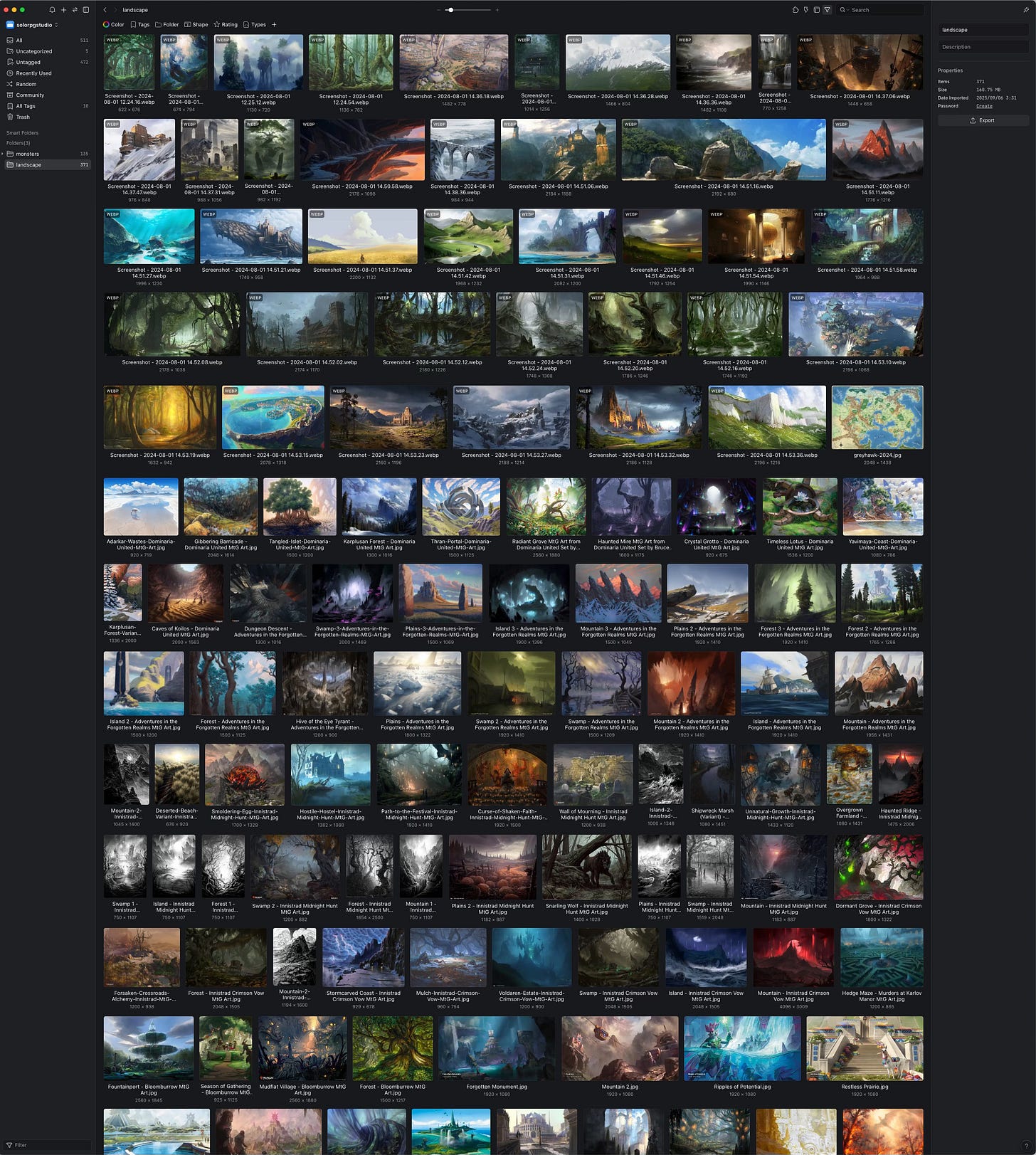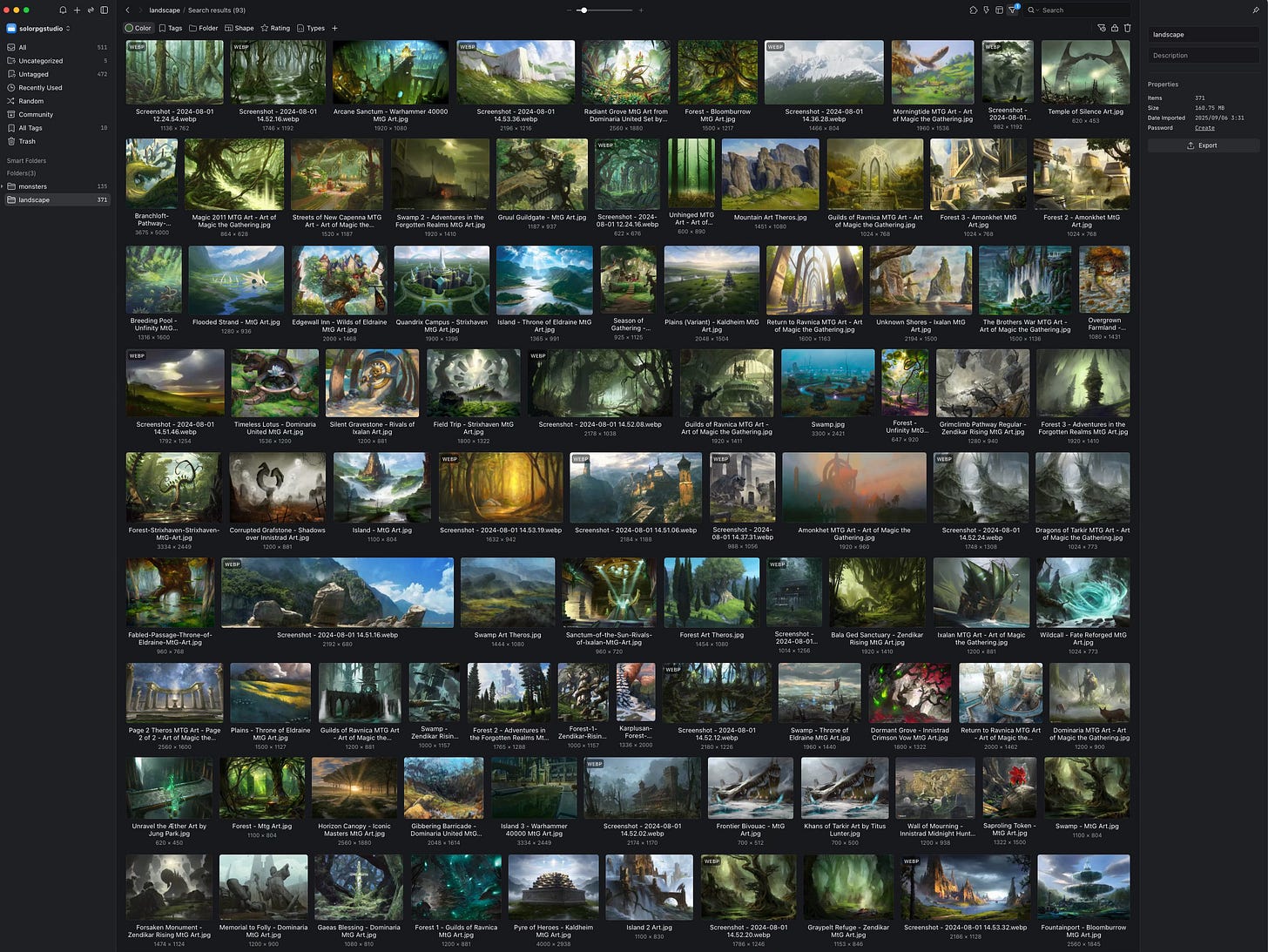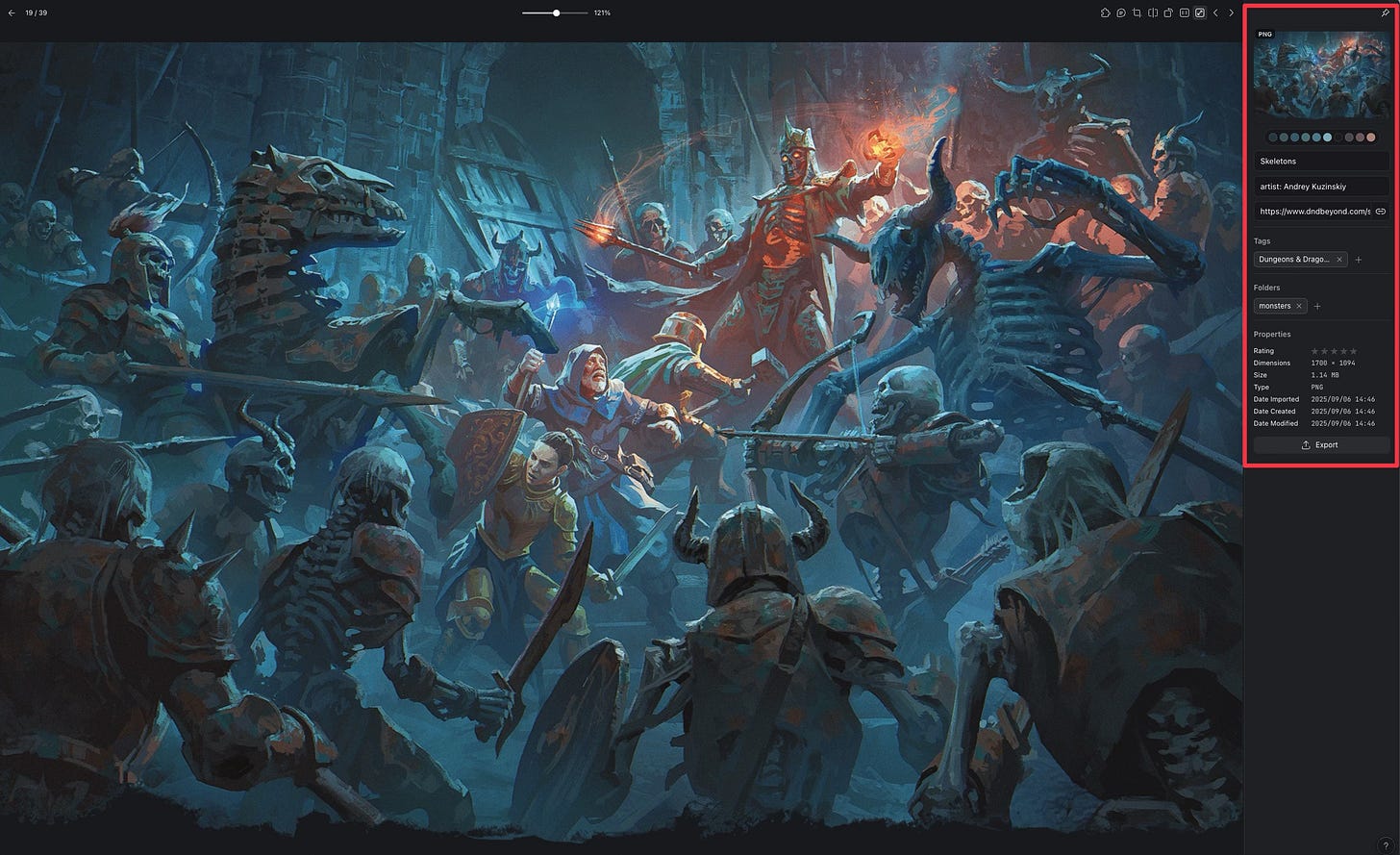Collecting Digital Artwork
An overview on managing artwork

Last week, I shared how I organize my TTRPG book collection using a fantastic app named Obsidian.
Today, I want to share with you how I collect and organize digital artwork that I use as inspiration during my play session.
Artwork Categories
First, I want to explain the artwork categories I use during play sessions. I usually like to have on hand artwork that I can use to visualize:
Scene
Environment
NPCs
Building
Spell
Weapons & Items
Treasures
Monsters & Enemies
Heroes
When I run an adventure—usually relying on random tables and my imagination rather than a published module—I can glance at my collection to decide what an enemy might look like, or what kind of forest the party has entered.
Having visual aids really helps me immerse myself in the game.
Eagle
When I first started playing solo, I didn’t have much of a system—I just saved images as I went along. It worked, but it wasn’t efficient. Over time, I realized being more organized meant less time searching and more time actually playing.
At first, I saved everything—Pinterest finds, images from rulebooks, random artwork—into a single folder. I had a huge collection, but filtering through it was a mess.
That all changed when I discovered the Eagle app.
Eagle is essentially an image viewer, but it comes with some fantastic features:
Tag images
Add descriptions
Automatically save the source URL
Generate a color palette and filter images by color (super handy for landscapes)
Organize with folders and subfolders
Create multiple libraries for top-level organization
My current setup
Here’s a quick snapshot of my current Landscape folder (I’m still reorganizing it).
Now, here’s what happens when I filter artwork by a specific green color:
So cool—I instantly get a gallery of forests to choose from, and I can pick the one that feels right for the scene!
When viewing an image full screen, the right-hand panel shows the color palette, description, source link, and other metadata. You can even rate images with stars.
The tag window adds another powerful way to filter and refine searches.
How I use it
Eagle also has a web extension that makes collecting art effortless. When you drag an image from a website (for example, artofmtg.com, a Magic: the Gathering art collection site), a small modal pops up.
You simply drop the image into the box, choose a folder if you like, and it’s instantly saved into Eagle.
Conclusion
Eagle has become one of my favorite tools—not just for solo gaming, but for other parts of my life too. It speeds up and simplifies the way I collect, organize, and retrieve digital artwork.
How about you? Do you use any tools for organizing art or inspiration?








Awesome resource! But as someone who is pretty new to the solo RPG scene, what about writing a list of art resources where you can find awesome, inspirational scenes?